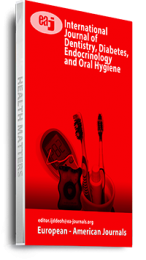One of the complications of dental implants treatments is bacterial infiltration due to poor adhesion of soft tissue to the abutment. To improve soft tissue cell adhesion and decrease biofilm adsorption and adhesion, one of the possible procedures is to change the surface roughness of abutment dental implants. The objective of this work is to compare the abutment dental implants surface roughness before and after acid treatment with dental cementum. The cementum is a tissue inherent of the tooth root surface and belong functionally to the periodontium apparatus. Adhesion of soft tissue to the cementum reduces bacterial infiltration. Scanning electron microscopy and 3D laser non-contact profilometer were used for surface analysis and roughness parameters measurement, respectably. The results showed that the abutment surface roughness increases exponentially with acid temperature treatment and the cementum roughness Ra parameter is slightly similar to the sample acid etched at 80℃. In vivo tests are needed to analyze the adhesion of fibloblasts cells on the abutment surface to reduce bacterial infiltration.
Keywords: biomimetic, cementum, dental implants, surface treatment

